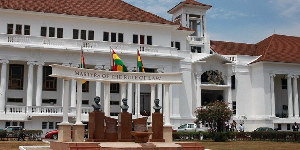By Bright Simons
The 2012 elections recorded a lot of irregularities as exposed on live TV for all Ghanaians to see, courtesy of the petition.
Some have wondered whether this is merely because of the additional scrutiny, but few have bothered to look into the data for hints of another theory.
In the 2008 elections, turnout was a little less than 70% and the average number of voters per polling station was 376. There was no biometric based voter verification. Average voting time is estimated at about 5.5 minutes. The lower rate of urbanisation meant that the skew of polling stations with more than 1000 voters was, say ?.
Fast forward to 2012, the turnout had turboed to 80%, and the average number of voters per polling station was now 432. The addition of biometrics to PVT did not only imply increased voting time but it added another layer on top (i.e. if biometric fails, switch to manual), with the combined effect that voting time is estimated to have hit 10 minutes.
The overall impact was thus not a mere 30% in the "time-congestion rate" but a potential 40% due to heightened probability of conflict. The perverse outcome was less time for administrative activities such as filling forms properly etc.
In the wake of these problems the EC resolved to increase polling stations to 34,000. This was later revised to 30,000. And finally 29,000. In fact, we currently have a little less than 29000. Meanwhile urbanisation has now hit 54%, the result of a 3.4% annual positive rate change. ? must now be at least (? + 0.4?).
Should we see a continued growth in the turnout rate, to say 85%. Then the overall increase in this variable we are calling the "time-congestion factor" should be at least 60% compared to 2008 levels, meaning that we cannot expect a higher quality election than what we saw in 2012. Simple.
At this stage, it seems the best hope for a relatively congestion-free polls, and therefore for fewer irregularities overall, is for a lower growth in turnout rate plus a higher voter arrivals rate in the early half of the day on December 7th.

If the authorities cared for data at all, they would be watching for signals as soon as polls open on the day.
Opinions of Sunday, 4 December 2016
Columnist: Bright Simons















